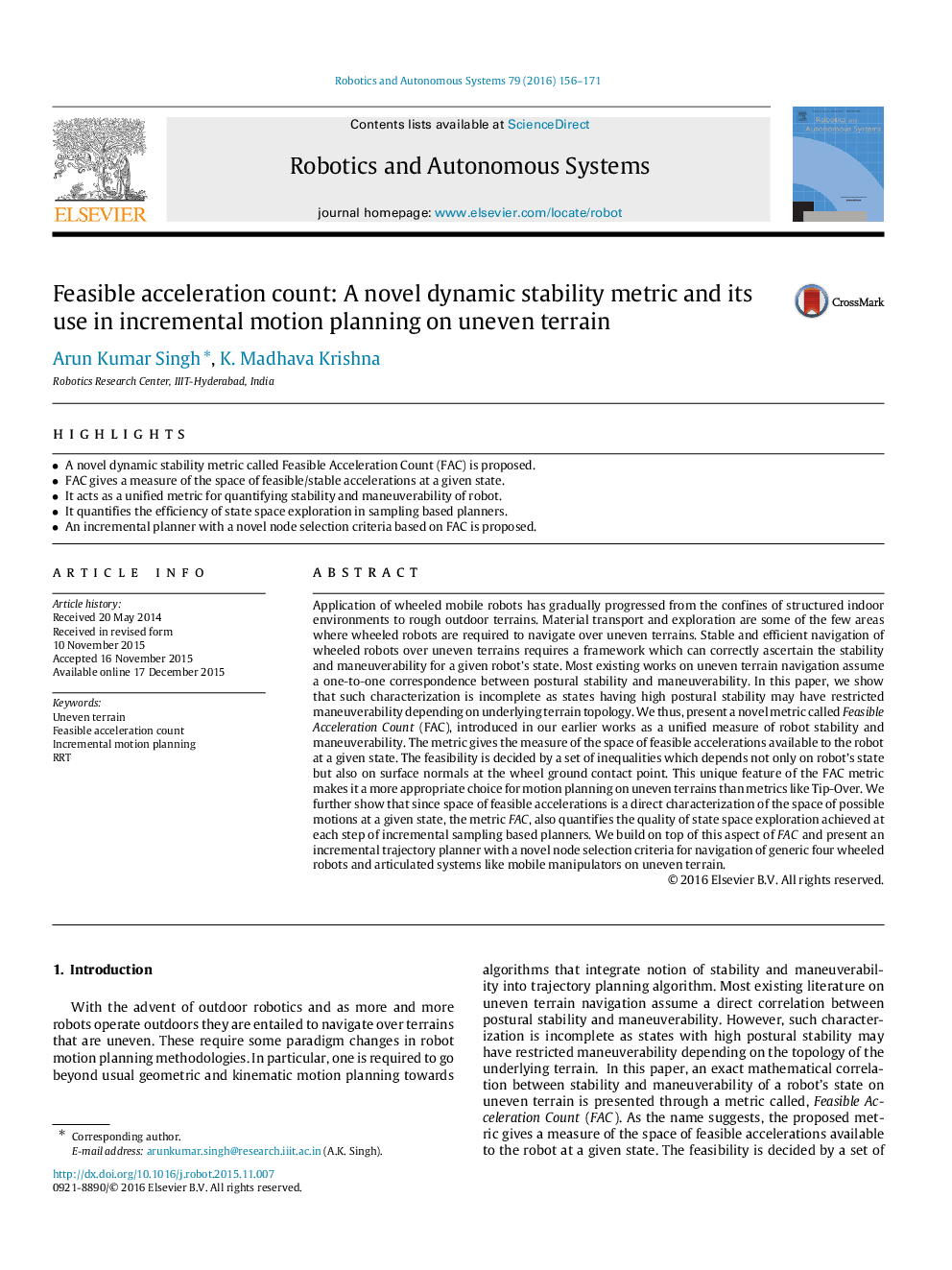| Article ID | Journal | Published Year | Pages | File Type |
|---|---|---|---|---|
| 411261 | Robotics and Autonomous Systems | 2016 | 16 Pages |
•A novel dynamic stability metric called Feasible Acceleration Count (FAC) is proposed.•FAC gives a measure of the space of feasible/stable accelerations at a given state.•It acts as a unified metric for quantifying stability and maneuverability of robot.•It quantifies the efficiency of state space exploration in sampling based planners.•An incremental planner with a novel node selection criteria based on FAC is proposed.
Application of wheeled mobile robots has gradually progressed from the confines of structured indoor environments to rough outdoor terrains. Material transport and exploration are some of the few areas where wheeled robots are required to navigate over uneven terrains. Stable and efficient navigation of wheeled robots over uneven terrains requires a framework which can correctly ascertain the stability and maneuverability for a given robot’s state. Most existing works on uneven terrain navigation assume a one-to-one correspondence between postural stability and maneuverability. In this paper, we show that such characterization is incomplete as states having high postural stability may have restricted maneuverability depending on underlying terrain topology. We thus, present a novel metric called Feasible Acceleration Count (FAC), introduced in our earlier works as a unified measure of robot stability and maneuverability. The metric gives the measure of the space of feasible accelerations available to the robot at a given state. The feasibility is decided by a set of inequalities which depends not only on robot’s state but also on surface normals at the wheel ground contact point. This unique feature of the FAC metric makes it a more appropriate choice for motion planning on uneven terrains than metrics like Tip-Over. We further show that since space of feasible accelerations is a direct characterization of the space of possible motions at a given state, the metric FAC, also quantifies the quality of state space exploration achieved at each step of incremental sampling based planners. We build on top of this aspect of FAC and present an incremental trajectory planner with a novel node selection criteria for navigation of generic four wheeled robots and articulated systems like mobile manipulators on uneven terrain.
